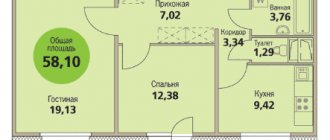Gas heating remains the most economical. But connecting gas to your home has become so expensive in recent years that it is sometimes more profitable to use electricity. The new initiative of the President of Russia on free gas supply to the boundaries of the sites can solve this problem.
And privileged categories of citizens can also count on reimbursement of expenses for installing gas equipment inside their household. And then the cost of gasification will be quite acceptable. In this article we will look into whether it is possible to connect gas inexpensively and even free of charge in 2021.
New rules
In June 2021, the State Duma adopted a law according to which the population has the opportunity to supply gas to the borders of their property for free. Until this time, main gas was carried only to the borders of the populated area.
Law No. 184-FZ of June 1, 2021, amending Law No. 69-FZ “On Gasification in the Russian Federation” (located in the legal system Guarantor and Consultant) established standards for social gasification, that is, free connection of private houses to existing or new ones gas distribution networks.
At whose expense will gas be supplied to the site?
If in the locality where a private house is located there is already a gas pipeline or is being laid, then all work on laying the gas pipeline will be paid for by the state. In this case, citizens will pay the cost of gas equipment, as well as work on laying communications on the site and inside the house.
Which areas will be subject to the law: free gasification of a private home in 2021 in rural areas
Households located in settlements where, as of January 1, 2020, intra-city and intra-village gas distribution networks were installed (Government Order No. 1152-r dated April 30, 2022) can participate in the social gasification program. In addition, the land plot must meet the following requirements:
- in the locality where it is located, a gas distribution pipeline was installed and commissioned before 01/01/2020;
- the site is located at a distance of no more than 200 meters from the existing gas pipeline;
- the volume of consumption on the site (residential building, bathhouse, garage, etc.) does not exceed 7 m3 per hour (this volume allows heating an area of 300 m2).
Which houses can be connected to gas supply?
Private houses for gas supply must meet the following requirements:
- gas boilers are placed in the basement or ground floor, no more than 2 in one room;
- in the room where the boilers are located, double-glazed windows can be installed, but provided that the design allows them to be knocked out quickly;
- a residential building must be equipped with devices that monitor pressure and temperature in the gas system and a gas consumption meter;
- the gas stove is installed at a distance of 1 meter from the opposite wall;
- gas equipment intended for installation has a certificate and all necessary attachments;
- If a gas stove is installed under a canopy, it must be equipped with blow-out protection.
Kitchen requirements:
- ceiling height of at least 2.2 meters;
- the presence of a gap under the door and a window for ventilation, with opening doors;
- volume of at least 8 m2 for a 2-burner stove, 12 m2 for a 3-burner stove and 15 m2 for a 4-burner stove.
What to do to get gas for free
To participate in the social gasification program, you need to collect a package of documents and submit an application to the GRO; you can use the official portal of the Unified Gasification Operator of the Russian Federation (address httpss://connectgas.ru) or by visiting the office of the regional GRO.
The package of documents should include:
- request for the issuance of technical specifications;
- copies of documents confirming ownership of the land and house;
- a copy of an identity document;
- land plan;
- owner's consent and power of attorney if documents are submitted by a third party.
Russian President V.V. Putin ordered to increase the gasification level to 82.9% by 2030. In order to fulfill the instructions and implement the social gasification program, regional authorities establish subsidies based on the Housing Code of the Russian Federation and the Law “On State Social Assistance”, based on the costs incurred under this program for the following categories of citizens:
- participants, disabled people and widows of WWII participants;
- home front workers;
- Leningrad siege survivors and minor prisoners of concentration camps;
- disabled people of groups 1 and 2;
- large families with 3 or more children.
Who will carry out free gasification
The implementation of the social gasification program will be carried out by a single gasification operator, Gazprom, including its subsidiaries. These services will be provided to the population on the basis of comprehensive agreements concluded with the operator.
Can they refuse connection?
If a plot of land or a house located on it does not meet the requirements of the gasification program, the gas distribution department will refuse to connect.
If a refusal is received due to incorrect or incomplete documentation, the applicant receives a notification and has the opportunity to correct the shortcomings within 20 days and resubmit the documents.
What should people pay for during rural gasification? Gas connection according to new rules
Laying gas pipelines refers to capital linear construction
According to the approved program, gasification is carried out on the following grounds:
- A special program is being developed at the state and regional (local) level, which includes a list of settlements that will be subject to gasification. At the same time, the costs of laying central gas pipelines are borne by Gazprom, and the installation of low-pressure gas pipelines from them (to populated areas and citizens’ homes) is paid for by municipal authorities.
- Residents of the locality independently create an initiative group, after which they collect a package of special documents, permits, and supply gas to their village. This method is used for gasification of villages that, for whatever reason, were not included in the state and regional gasification programs.
Speaking about the regional program, it should be noted that gas workers independently prepare all project documentation and find organizations that have permission to build gas pipelines. And then they pay all expenses together with the municipal authorities, with the exception of the direct connection of the household or apartment.
If citizens do this on their own, then the entire burden of preparing documents, projects, and finding contractors falls on their shoulders.
It must be remembered that laying gas pipelines refers to the carrying out of capital linear construction. Therefore, such work requires not only technical documents, but also obtaining various permits from municipal and regional authorities.
Gasification process step by step
Gas connection directly to the house begins with documentation. To do this, you need to select the type of gas supply by calculating the maximum hourly gas consumption.
Attention! If the area of heated premises is no more than 200 m2, there is no need to calculate gas consumption, since in this case it will not exceed the minimum value.
We were the first to begin gasification of private houses in the Moscow region. Mosoblgaz does this here, on the website at https//mosoblgaz.ru, which contains all the necessary documents and step-by-step instructions for users. On the Mosoblgaz website you can not only find out when gas will be available in a particular locality, but also submit an application for connection.
Read also: Mosoblgaz - how to find out the debt on a personal account?
Stage 1 documentation of gasification
At this stage, you need to submit an application for gasification of your private home to gas distribution organizations (GRO) and obtain technical conditions (TS) for gasification.
Submitting an application
It can be submitted either when visiting the GRO offices or on its website. At the same time, citizens will be required to connect the gas, since previously there were cases when the pipe was connected to the site, but the owner of the site did not connect the gas, so the gas distribution organization incurred the costs.
After this, you need to contact the design organization with technical specifications and order a gasification project.
Note! The technical specifications are valid for 70 working days, unless they indicate a specific period of their validity. During this period, it is necessary to develop a project and conclude a connection agreement. If you do not meet this deadline, you will have to re-conduct the examination for the technical specifications.
Preparing a terrain topoplan
A topoplan is required to determine the location of the gas pipeline connection to the central highway and the route of laying the gas pipeline bypassing other communications. It is better to order it from a specialized company engaged in engineering surveys. You can obtain it from the contractor after transferring the measurements taken in the form of a plan onto paper.
The gasification project is drawn up on the basis of specifications. The project includes the following information:
- the place where the gas pipe enters the house;
- distribution of communications throughout the site and inside the house;
- list of required work;
- security measures;
- work estimates;
- gas equipment recommendations.
The gasification project can be drawn up either by the GRO or another design organization that has a license to carry out this work. To draw up a project, the customer must provide a diagram of the land plot (situation plan), which can be obtained from the local administration, the BTI or from a cadastral engineer.
Drawing up a technical plan for the house
In addition, a technical plan of the house is also required, which can be ordered or a copy of it can be obtained from the BTI if it has already been drawn up but is not available from the owner.
Purchase of gas equipment
After receiving the project, you can start purchasing gas equipment that the gas distribution department has by simply submitting an application. If it is purchased from a third party, you must have certificates, passports and permission to use them.
Planning stage
The gasification project indicates the location of each appliance and chimney. The layout must first of all meet safety requirements. For these purposes, it is necessary to provide all the necessary documentation for the purchased equipment, if it was not purchased from the gas distribution organization, and the hoses connecting the gas equipment must be sealed and made of materials that allow gas to be supplied safely.
Gasification of a site and a private house can only be carried out on the basis of technical conditions and a completed gasification project.
Required Documentation
To carry out gasification of a private house, the gas distribution department must provide:
- title documents for the house and land;
- situational plan;
- owner's passport;
- SNILS.
Ownership documents
In addition, documents on the ownership of the land and house are provided, since a gasification agreement can only be concluded with the owner. It is necessary to take into account that only permanent buildings that are tied to the ground, that is, stand on a foundation, can be gasified. But the condition of the house does not matter, since a private house can be under construction or built.
Technical conditions for gasification of a residential building
Technical conditions for gasification of a residential building are issued by the State Distribution Organization based on the submitted application of the owner of the house who wishes to connect the gas supply.
Gasification project
Gasification of a site and a private house can only be carried out on the basis of technical conditions and a completed gasification project, which is ordered from a specialized company and carried out by specialists with special technical education and accreditation.
Stage 2: supplying the pipeline to the house
The pipeline can be supplied to the house only if the distance from the gas pipeline to the gas-using equipment is no more than 200 meters.
Stage 3 arrangement of the boiler room
The boiler room in which gas-using equipment is located must meet certain requirements. So, if the area of the house is up to 250 m2, its volume is not regulated, and if the area of the house is more than this area, the volume of the boiler room cannot be less than 15 m3. It should also have glazing, ventilation and the door should open outwards. A gas meter must be installed to record gas consumption.
Stage 4: Input of communications into the house
Input of communications into the house must be carried out by specialists who have access to such types of work and must sign a written contract.
Installation of a gas pipeline to a private house
Based on a comprehensive agreement, the installation of a gas pipeline to a private house can be carried out by a gas distribution company, and the customer will receive a guaranteed high-quality result.
Stage 5 trial run and final activities
After completion of installation work, it is necessary to call a GRO employee for inspection. To do this, submit an application, the waiting period for which is on average 2 weeks. The verification carried out is confirmed by a receipt. A GRO employee seals the meter, checks the tightness of the joints and conducts a test run. In addition, he provides instructions on the safe use of installed gas equipment.
Launching a gas pipeline
Only after all the activities have been completed and a receipt for the inspection has been presented to the gas distribution department, the gas pipeline will be launched.
Conclusion of an agreement with the gas industry
Simultaneously with the launch, a gas supply agreement is concluded. To do this, a certificate of acceptance for operation of the internal gas pipeline system and a package of documents for the equipment and work performed are presented to the gas distribution department, signed by the parties.
What is needed for gasification
Now let's move on to consider the question of what is needed to carry out gasification. To begin with, village residents must receive information about whether gasification of the village is possible.
To do this, it is necessary to create an initiative group, select a chairman, or a senior person, and empower him. To do this, citizens hold a meeting at which they express their desire to install gas, and elect a leader. All this is documented in a protocol.
The elder must compose a letter and send it to the head of the municipality (regional authority), asking for information whether their village is included in the state program or not. Depending on the response received, gasification activities will be carried out.
If the village is on the list of the state program, then the answer will indicate this information, as well as the date when work on laying pipelines will begin. Information will also be provided on how much it costs to connect to the common gas main for each residential premises.
That is, citizens need to wait for the work to begin, pay a certain amount, and wait for gas to be supplied to their home. If the answer indicates that the settlement is not subject to state gasification, then such issues must be resolved independently.
This will be discussed in detail below. You need to know that currently, for families with low incomes, the pension fund and social security authorities provide subsidies that can be used to pay for gas installation and connection.
Connection cost
According to the free gasification program, at the expense of the state, only the gas pipeline is installed to the site; all other work must be paid for by the citizen himself.
Payment for connection to a private house
On average, it can cost from 30 to 100 thousand rubles. This price includes:
- collecting documents and obtaining specifications - 8-50 thousand rubles;
- gasification project - 3 - 20 thousand rubles;
- wiring from the main pipe to the house - 2-5 thousand rubles. for 1 meter;
- insertion of a private pipe into the main system 10-15 thousand rubles;
- exit of the gas distribution department employee and assessment of the readiness of the system for connection - 1-2 thousand rubles.
Average cost by region
The average cost by region differs and is:
- Moscow region 400 - 700 thousand rubles;
- Leningrad region 170 thousand rubles;
- Nizhny Novgorod and region - 150-200 thousand rubles;
- Asian territory of the country - 200 thousand rubles;
- Far East - over 200 thousand rubles.
Privileges
Each territory establishes benefits for certain categories of the population in the form of subsidies for connection and used gas.
What preferential state gasification programs operate in Russia and how are they beneficial?
Subsidizing the connection allows you to significantly reduce the costs of both connection and payment for consumed gas. The amount of subsidies can range from 50 (according to federal standards) to 90% (according to regional standards) of the funds spent.
These benefits are provided:
- pensioners;
- disabled people;
- veterans who participated in combat operations and their widows;
- large families;
- liquidators of the Chernobyl Nuclear Power Plant;
- low-income.
What if I don’t want to gasify or don’t have time?
In the Moscow region, they decided to run a gas pipeline free of charge to the boundaries of land plots without any applications. The work is carried out strictly according to the schedule, which can be monitored both on the Mosoblgaz website and on the website of the regional Ministry of Energy.
“There is a 100% hit: we walk down the street, install a free gas pipeline to the borders of the house, the resident enters into a comprehensive agreement with us, and we, accordingly, carry out the work, supply gas to the equipment,” Baranov explained.
Sometimes a person, for various reasons, is not ready to enter into such an agreement, but has entered into a social gasification project. Gas will still be supplied to him, as mentioned above, to the border of the site. Specialists will provide assistance in completing the work on the site itself when the resident is ready for it.
It also happens that a person does not need social gasification. As a rule, this situation is typical for those living on the site seasonally.
“During the conversation <...> we find out that they don’t really need a gas pipeline within the boundaries of the site either, because it imposes certain burdens on the use of the nearby territory. We are not building gas pipelines here. We don’t do this only in cases where the resident himself says, “I don’t need this, I don’t want this,” said the head of Mosoblgaz.
Even if you plan to finish building a house in 2023 and register it, and your household is included in the boundaries of the locality under the social gasification program, we will also come when you are ready and <...> we will provide free gas supply to the boundaries of your land plot
Igor Baranov.
The wishes of residents are also taken into account when the house is under construction and gasification is necessary. According to the rules, the building must be registered. If the necessary documents are not available, then it is better to quickly prepare them. It is now very easy to do this in the Moscow region. Once all legal formalities have been completed, specialists will carry out the work on site. It doesn’t matter when the house is completed.
Legislative requirements for gasification of private houses
Gasification of private houses must first of all meet safety requirements, including the presence of gas boiler ventilation, glazing (a double-glazed window must contain 1 glass), ceiling height of at least 2.5 m, boiler room volume of at least 15 m3.
Safety
Compliance with these requirements will ensure the safe use of gas equipment.
Rules for connecting gas to the house
Gas connection to the house is carried out only after the entire package of documents, and if the gas pipeline passes through the neighbors’ property, then their permission.
And compliance with the rules for connecting gas to the house will make it possible to obtain permission to connect gas without additional costs.
FAQ
Most often, citizens are interested in the question: is it possible to get a loan for gasification of a house?
Contact any bank and they will definitely select a profitable lending option. For example, Rosselkhozbank has developed a special program for lending to the population in rural areas for gasification purposes.
Is it possible to carry gas into SNT?
The law provides such an opportunity, but the decision on gas distribution via SNT must be made by the general meeting.
Procedure for writing an application
The last question that remains to be clarified is the connection of a particular subscriber to gas. It will happen according to the following algorithm:
- the subscriber must contact the regional gas authority with an application requesting to connect his facility (residential premises) to gas, it indicates the address, as well as the number of devices that will be used (documents confirming the ownership of the residential premises are attached to this document);
- after this, the subscriber must contact the regional gas office, where they must prepare a connection project for him (no approvals will be required for this);
- After all approvals, the subscriber purchases a gas meter (needed to record the consumption of gas and pay according to its readings), and enters into an agreement with the contractor whose employees will carry out the connection.
The release of gas to a resident’s household occurs in the presence of representatives of the regional gas company. According to the plan for gasification of villages in the Russian Federation, it occurs on the basis of a program adopted at the state and regional level.
In this case, subscribers pay only for their connection. If the village is not included in this program, then the wiring of the main line and the preparation of technical documentation falls on the shoulders of the village residents.
Results
Free gasification of private houses in accordance with Federal Law No. 184 dated June 1, 2021 must be completed by 2030. Considering that applications for connection are already being accepted throughout Russia, you need to send your documents to the gas distribution department as quickly as possible, otherwise the deadline for gasification of your particular site may be pushed back very far, given the large number of applicants.
You may also be interested in: How to force the administration to make a road in a village.










